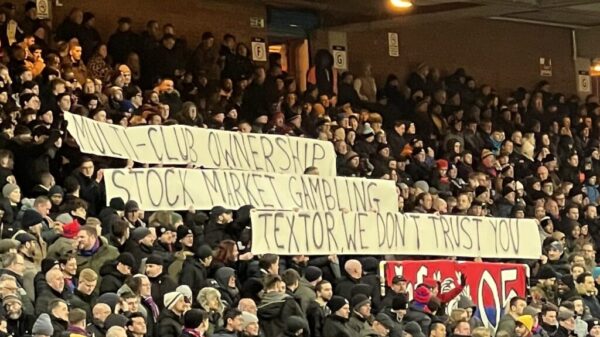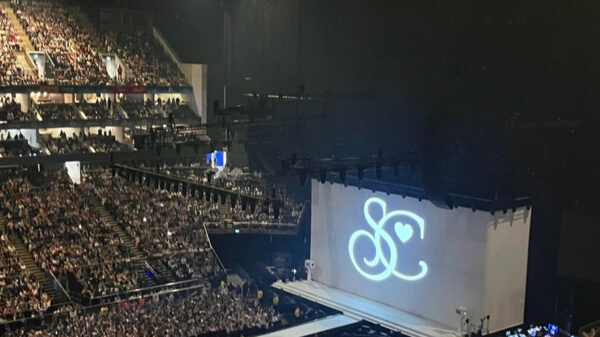Staff Writer Isabelle Hickman looks back on the most memorable looks from Eurovision 2023 – a lavish night of music, fashion and solidarity.
On 13 May nearly ten million people sat down in front of their television (or rather their phones, or computers) to watch Eurovision 2023 and be ‘united by music’. Sweden was victorious, with ‘Tattoo’, a moving Europop-techno-ballad. Proving that being on home turf is not always a recipe for success, the United Kingdom was placed second last with Mae Muller’s ‘I Wrote a Song’, one of several girl-pop-I-don’t-need-no-man anthems of the night. But on a night of celebration, music, glitz and glamour, it would be impossible not to discuss the fashion – the bejewelled, the camp and the cultural.
Behind the opulence, the rhinestones, the feathers and the neon, Eurovision is an important night for fashion. Eurovision brings significant revenue to retailers – it is predicted that there will be an “anticipated expenditure of 5 million pounds on fancy dress clothing…[as] fans [immerse] themselves in the event’s spirit by donning costumes inspired by their favourite acts”. However, in an industry dominated by famous fashion houses, and millions of dollars, Eurovision provides an opportunity for local fashion talent from across Europe and Australia to be showcased.
With this year’s partnership with TikTok and the growing global attention, Eurovision is becoming an increasingly important platform for up-and-coming designers, especially those further afield than the exclusive fashion capitals. Many performers chose to wear local designers and used their costumes and the Eurovision platform to draw attention to their nation’s cultures.

Firstly, I cannot go without mentioning Finland. In a look I can only compare to one of those neon spikey earrings you could buy in Claire’s circa 2011, Finland’s Käärijä, did not disappoint. Breaking out of a wooden panel box, Käärijä performed his hit ‘Cha Cha Cha’, in the hyper-pop genre, with lyrics reminiscent of Sunday Scaries – “I don’t think about tomorrow when I grab a pint like that”, wearing a neon lime green spiked bolero jacket…and not much else. The neon colour may have taken inspiration from the spring/summer 2023 runway trend featured by the likes of Fendi and Givenchy; however, the sentiment behind the spikes comes solely from its Finnish designer Leevi Ikkaheimo.
Ikkaheimo in his ‘NO PAIN NO GLAMOUR’ spiked collection stated that the spikes are a “satirical statement on how a certain body image is force-fed to us starting from an early age: the plastic bodies of toys marketed towards young boys are built to an outrageously unrealistic proportion”.
Lithuania’s Monika Linkyte changed the style of her dress several times before her final performance – what didn’t change was its striking and on-trend colour and its subtle cultural homage. Designed by Omar Bayoumi, a London-based, Egyptian start-up-designer, promoting genderless, fluid, and natural fashion, the dress and its amber colour were chosen to honour the mythic powers of amber, a Baltic gemstone.

On the surface, Armenian singer Brunette’s outfit may appear to be just another performance look. However, Armenian designer Narek Jhangirian cleverly wove hidden cultural references into it. The top half was inspired by the ‘Mother Armenia’ monuments in Yerevan and Ijevan, symbolising peace through strength, and her silver accessories were a reference to the jewellery preference during ancient times. Demonstrating that the hair completes the look, Brunette’s hair was linked to the deep-historic tradition of women wearing braids, which although once worn for practicality, are also symbolic of beauty, unity, and strength.
Albania’s Albina Kelmendi performed ‘Duje’, a traditional song (compared to other more lyrically scandalous entries) about love in the family and overcoming life’s challenges together. Standing alongside her, her own family wore various styles of black outfits. Clearly the Kim K of her family, Albina’s outfit was truly the centre of attention, incorporating heavy silver jewellery and embellishment in reference to traditional Albanian dress.
In a night of a hundred-sequinned costumes, it is hard to say who was the sparkliest of them all. However, elevated 20 feet off the ground in a floor-length (yes, the dress did reach the floor) black couture gown designed by DidierAngelo, French-Canadian singer La Zarra certainly won the prize. The dress had around 6,000 embroidered crystals and rhinestones, “transforming the singer into a singing jewel”. The Parisian-born designer Romain Thevenin described the look as “Edith Piaf who meets Lady Gaga”. Twitter referred to La Zarra as the “human Eiffel Tower”. In some kind of Rorschach test, whether you see the Piaf-Gaga vision or the puddle-iron French landmark (I must admit I see the latter), La Zarra’s personal style of old Hollywood and French glamour truly dazzled. And it was complete with a matching sequinned beret – maybe Emily was on to something after all?

I was disappointed at the lack of rollers, fuzzy slippers, and matching tracksuits. Although Mae Muller’s outfit, with its black-mesh panelled corset, diamanté-chain necklaces, and long acrylic nails was most reminiscent of the Liverpool look, Noa Kirel’s baggy-cargo pants and cropped corset, Czechia’s matching baby pink suits and slicked back ‘clean-girl’ braids, and Polish singer Blanka’s orange sequinned mesh mini dress all could have been seen on a Saturday night in Concert Square. I joke.
Throughout the show, however, there were many fashionable stands of solidarity with Ukraine. Alesha Dixon and Julia Sanina sported sparkling yellow and blue dresses, before swapping colours mid-show – perhaps a statement of shared unity and solidarity between the UK and Ukraine. Newly crowned King Charles III and Queen Consort Camilla, and the Princess of Wales, who made special-guest appearances, also wore Ukrainian ultramarine blue, representative of Ukraine’s blue skies. Graham Norton – his commentary never failing to be the best performance of the evening – also paid homage to Ukraine, in a glittering black and gold tux, designed by Ukrainian designer LuVi.

Eurovision is supposed to be a-political. Still, it was particularly hard to forget the state of the world we currently live in, with the competition moved from Ukraine to Liverpool in the wake of the ongoing conflict in Ukraine and the Russian strikes on Ternopil, minutes after Ukraine’s entry Tvorchi performed. Andrew Bolton, Wendy Yu Curator in charge of The Costume Institute at the Metropolitan Museum of Art, correctly stated, “fashion functions as a mirror to our times, so it is inherently political”. Whereas Bolton is probably alluding to subtler fashion trends than the Eurovision ones, fashion really does reflect the political state of the world.
Using fashion to openly condemn Russia and Belarus’s actions, Croatia’s entry Let 3, performing ‘Mama SC’, an anti-war song, wore what Twitter described as “military drag”. Sporting military garb, handlebar moustaches and lipstick, before stripping off to their underwear and waving huge missiles, the group aimed to create an “army of love”. The group is known for getting naked on stage, and although they didn’t go all the way, surely this political statement through fashion will not be forgotten.

Eurovision gives ground for new fashion trends to spread, brings attention to cultures that aren’t spotlighted in the mainstream and brings political solidarity. Eurovision is an evening of both self-expression and unity, and fashion is a crucial element of that. The crowds of people decked out in sequins, flags of national and personal pride and an array of technicolour (that would make Joseph jealous) outside of St. George’s Hall, in the Liverpool Arena or at viewing parties are a testament to the self-expression and unity that Eurovision represents. Fashion is a crucial element of this. I’m not proclaiming a sequin can change the world, but maybe it’s a start.
Who Made What? Learn More About Some of the Eurovision Finale Designers
Sweden – Fadi al Khoury, Finland – Leevi Ikkaheimo, Israel – Alon Livne and Itay Bezaleli, Italy – Versace, Norway – Susanne Hoftun and Katarzyna Blonska, Ukraine – History, Belgium – Walter Van Beirendonck, Estonia – Sille Randviir, Australia – Catherine Martin, Czechia – Zuzana Zizoe Vesela and Bara Jurankova, Lithuania – Omar Bayoumi, Armenia – Narek Jhangiryan, Austria – Johann Erhardt and Maximilian D’Antonio, France – DidierAngelo, Spain – Paola de Diego, Switzerland – Romain Thevenin, Slovenia – Ponorelli (Damir Rakovic), Portugal – Dino Alves
















